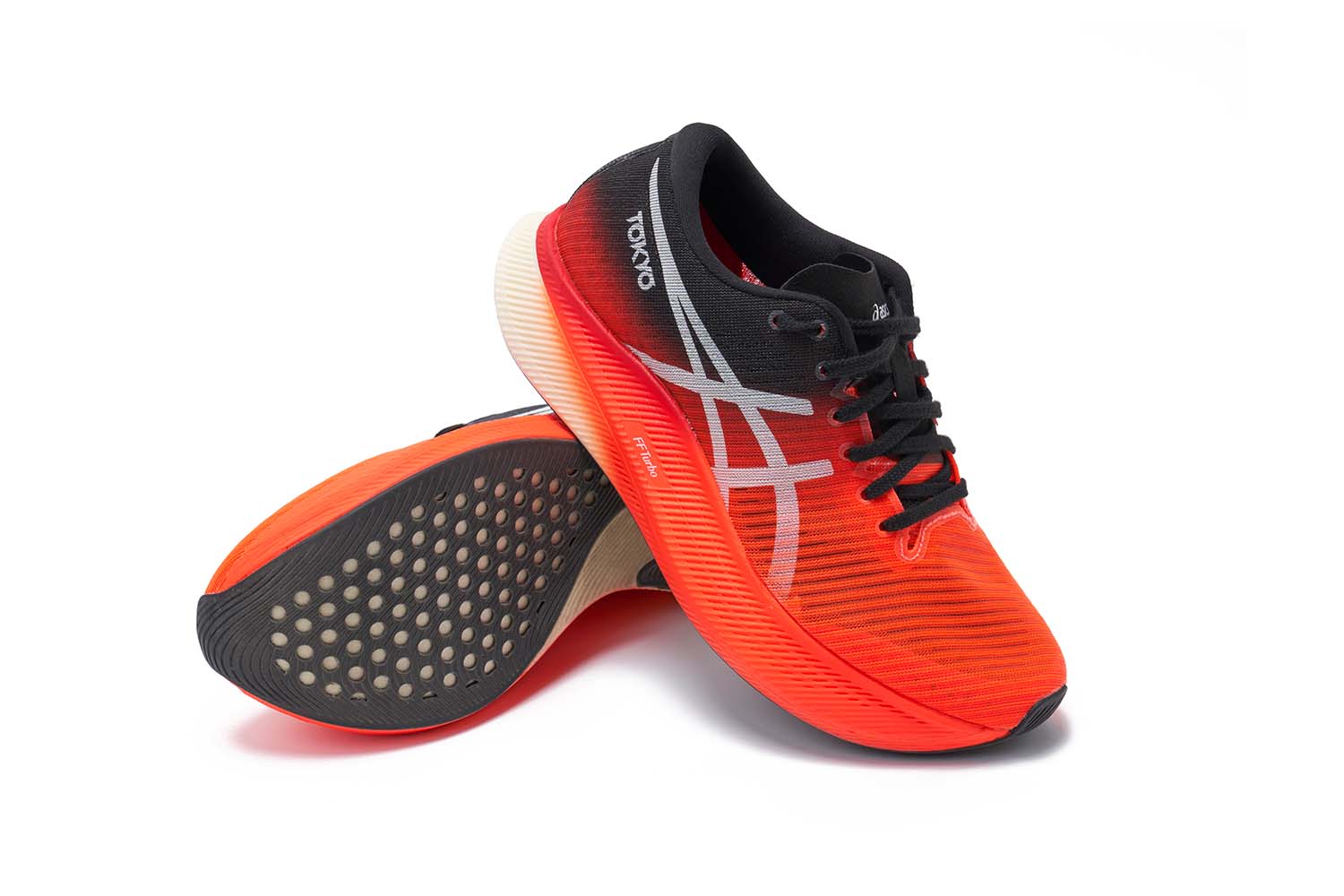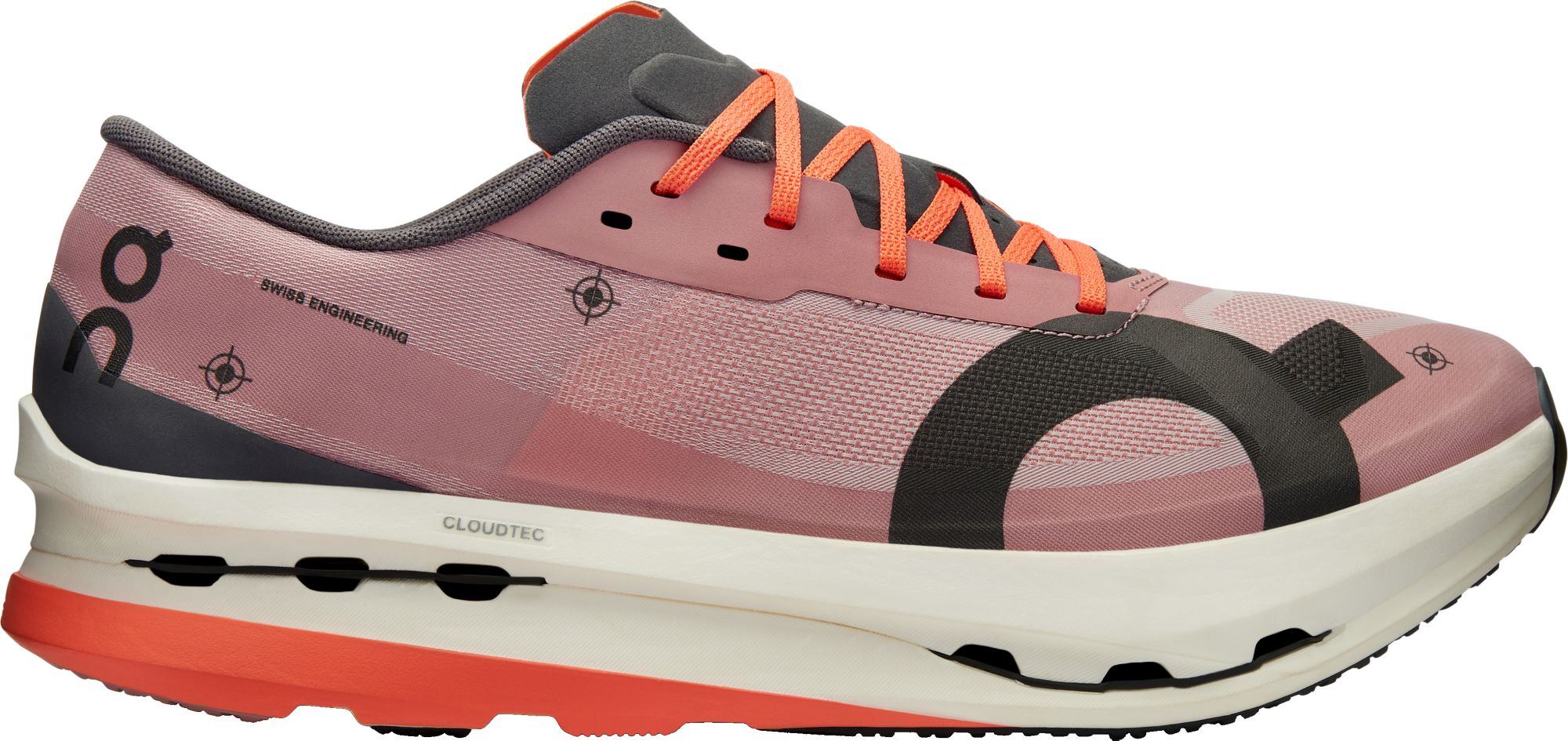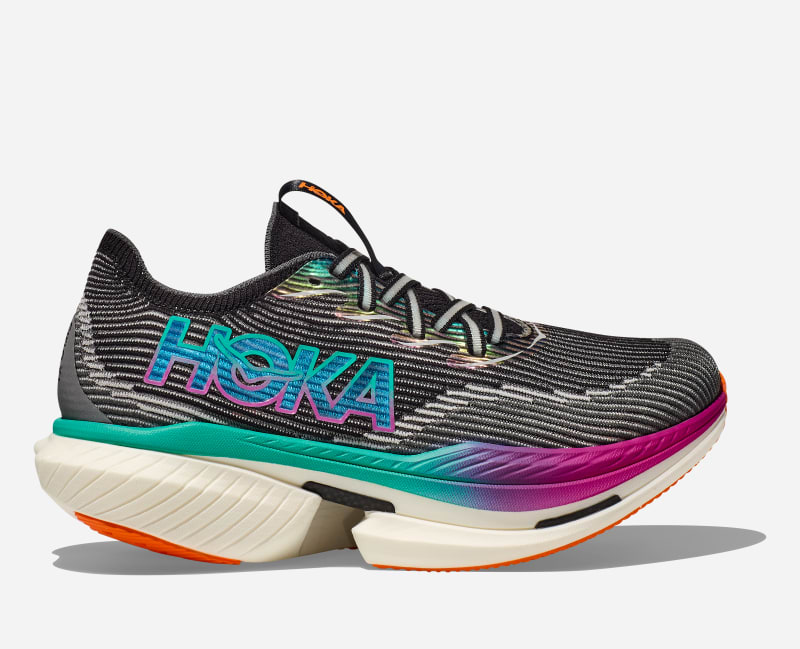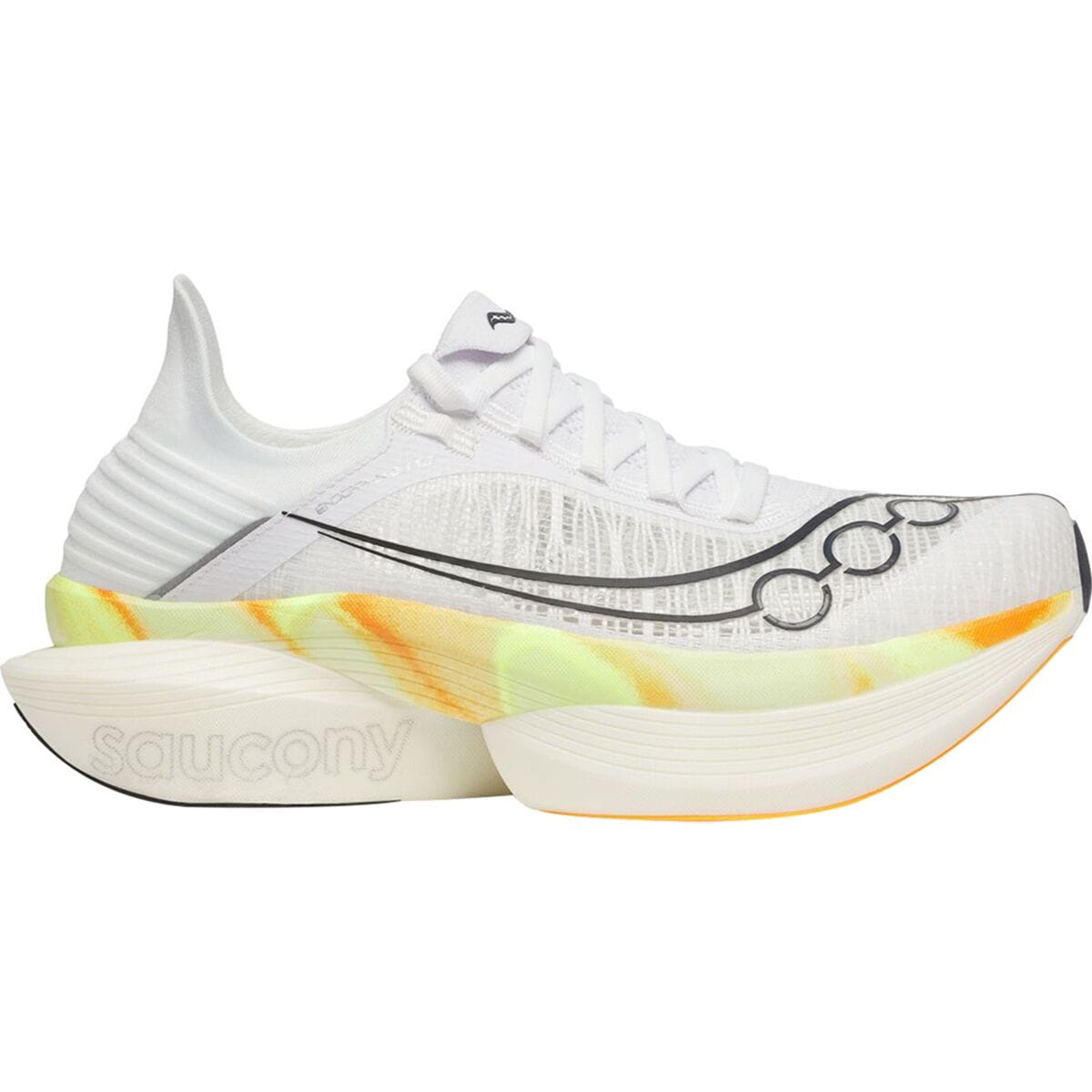Best triathlon running shoes in 2025
To provide you with a triathlon boost, it’s wise to have some lightweight specific race-day shoes in your triathlon kit bag. Our expert testers review and rates 26 pairs of race-day run shoes…

Competing in triathlon admittedly involves a lot of kit, but there are certain areas you can scrimp and others where it’s so worth it to invest for the best race-day experience. Enter, triathlon running shoes.
To perform at your best, you will need your running shoes to be optimised for triathlon. By this, we mean are they lightweight, snappy, and propulsive? But also, do they gel with your triathlon needs? Namely being quick to whip on and off, and chafe-free if you choose to compete sockless.
There’s a lot to consider when to comes to picking the right triathlon running shoes for you. Your tried and tested training mules just may not cut it on race day, where speed, comfort and functionality reign supreme.
Once you know how to choose triathlon running shoes, what features to look out for, and the best models around on the market today, you’ll be making strides with your new kicks. Our expert reviewers have compiled their favourite zippy triathlon running shoes together in this list, so let’s get into it…
Why you can trust 220 Triathlon
Our team of experts rigorously tests each product and provides honest, unbiased reviews to help you make informed decisions. For more details, see how we rate and test products.
Best running shoes for triathlon at a glance
The Salomon S/Lab Phantasm 2 (buy) is a lightweight and comfortable speed machine, with good rebound and a nicely breathable upper.
The Saucony Endorphin Speed 4 (buy) is a cushioned and comfortable running shoe primed for triathletes.
The Brooks Hyperion Max 2 (buy) is a great run shoe for both triathlon training and racing.
The best triathlon running shoes in 2025
Best overall triathlon running shoes

1. Salomon S/Lab Phantasm 2
220 Triathlon verdict
A sleek race-day shoe that’s super lightweight, speedy, and comfortable. Score : 89%
Pros
- Light and fast ride
- Stable
- Breathable
Cons
- High price-tag
- Can feel quite firm
- $315 / £240
The Salomon S/Lab Phantasm 2 impressed during testing, standing out for its lightweight design (7oz/200g, US8/UK7) and exceptional fit.
The upper provides a secure, sock-like feel, while the tongue’s padded, flexible construction ensures comfort without pressure points.
Stability is a highlight, thanks to a flared midsole and wider forefoot platform, making it one of the most stable race-day shoes tested.
The Contagrip outsole delivers excellent grip on corners and pavement, while the PEBAX midsole and carbon plate create a smooth, responsive ride.
Though the price isn’t to be sniffed at, it’s a versatile and speedy racing option across various distances. TW
Read our full review of the Salomon S/Lab Phantasm 2 here.

2. New Balance SuperComp Elite v4
220 Triathlon verdict
A top-end racing option that’s pretty close to the best money can buy. Score : 90%
Pros
- Stable and secure
- Incredibly propulsive
Cons
- Weight
- High cost
- $249.99 / £260
The New Balance FuelCell SuperComp Elite v4 offers notable upgrades to its predecessor, including a PEBAX foam midsole and thinner, arched carbon plate.
Testing revealed a bouncy, stable ride with excellent energy return, making it suitable for various distances and moderately twisty courses.
The breathable upper is sockless-friendly, though the fit runs small, and the tongue requires adjustment, which could be problematic for triathletes in transitions.
At 7.8oz/222g (UK7) and $250/£260, it’s heavier and pricier than its predecessor, with the rubber outsole contributing to added weight. Refining these aspects in future models could elevate it to top-tier supershoe status.
Read our full review of the New Balance FuelCell SuperComp Elite v4 here.
- Best elastic shoe laces to streamline your triathlon racing
- What running shoes do pro triathletes use?
Best cushioned triathlon run shoe

3. Saucony Endorphin Speed 4
220 Triathlon verdict
A great option for an all-rounder shoe, built for both racing and training miles. Score : 95%
Pros
- Responsive run feel
- Excellent grip and support
- Comfortable
Cons
- Not for wide feet
- $170 / £180
If you’re seeking a cushioned, super-shoe-inspired option for both training and tri racing, the Saucony Endorphin Speed 4 is an excellent choice. Designed for both comfort and propulsion, it combines performance and practicality well.
The midsole’s winged nylon plate enhances stability and adds a springy responsiveness to the run stride. While the rocker sole promotes smooth transitions and efficient energy return, akin to top-tier carbon-plated shoes.
Despite its bulky appearance, the Speed 4 is surprisingly lightweight, helping reduce leg fatigue over longer distances. The padded heel collar ensures a secure, snug fit, and the outsole delivers reliable grip, making it a versatile road running shoe. JP
Read our full review of the Saucony Endorphin Speed 4 here.
Most versatile triathlon run shoe

4. Brooks Hyperion Max 2
220 Triathlon verdict
A good option for a shoe that can handle both training and tri racing, with a decent price-tag. Score : 84%
Pros
- Decent value for money
- Great amount of comfort
Cons
- Not the lightest
- $180 / £160
The Brooks Hyperion Max 2 impressed us as a versatile training shoe that can also handle race-day needs. Featuring a PEBAX SpeedVault plate, it provides responsive propulsion, while the increased stack height (36mm heel, 30mm forefoot) balances support and speed.
The knitted upper delivers excellent breathability and comfort, making it sockless-friendly, though it’s less suited for wet conditions. The roomy toe box and secure lacing enhance fit, while the extended heel tab aids quick transitions.
With firm cushioning, it excels at tempo runs and faster-paced training, but isn’t ideal for recovery jogs. Overall, the Hyperion Max 2 is a solid neutral shoe and a strong Brooks offering. MB
Read our full review of the Brooks Hyperion Max 2 here.

5. On Cloudboom Echo 3
220 Triathlon verdict
Hard-wearing and well suited to tri racing in some respects. The firm ride will be either a pro or a con. Score : 75%
Pros
- Lightweight ride
- Good traction and durable
Cons
- Firmer than others on test
- Narrow fit won’t suit all
- $289.99 / £260
The Cloudboom Echo 3 stands out for its lightweight design, tipping the scales at just 7.4oz/211g per shoe (size US8/UK7). Ideal for tri racing.
Its construction includes a full-length carbon plate sandwiched between two foam layers, creating a responsive and energetic ride. However, the shoes feel firmer compared to others and with a 10mm heel-to-toe drop, we found that they encouraged heel-striking during runs.
The fit leans on the narrow side, offering agility but less support. On the plus side, the breathable upper ensures a secure fit and delivers a comfortable sockless experience, ideal for triathletes.
The outsole impressed with its durability and reliable grip, though some knee discomfort arose for us during testing. MB
Read our full On Cloudboom Echo 3 review for more.

6. Asics Metaspeed Sky
220 Triathlon verdict
A well thought-out and lightweight design, but we just didn’t gel with these shoes. Score: 82%
Pros
- Sustainable and breathable
- Great for sustaining race pace
Cons
- Runs small
- $250 / £225
The Metaspeed’s available in two almost identical looking variations. On test here is the Sky, which is for runners who extend their stride to increase pace.
It has a carbon plate sandwiched within its midsole and a 5mm drop, both of which aim to help you conserve energy and maintain race pace.
Like the Ons, they feature a recycled upper, while breathability is on par with the Crafts. The heel collar has a surprisingly luxurious amount of cushioning, considering these are the lightest shoes on test at 5.6oz/166g.
However, our UK5.5 ran considerably small, and we found our toes were squished forwards in the narrow toe-box.
The curved sole’s best suited to midfoot or heel strikers as the outsole felt lacking in grip and left this forefoot striker feeling somewhat unstable in motion. Plus, they’re the coolest looking kicks on test.

7. Hoka Cielo X1
220 Triathlon verdict
A spongy, springy and slightly bonkers Hoka release that doesn’t seem to have a USP. Score: 70%
Pros
- Propulsive, bouncy ride
- Ideal for distance running and events
Cons
- Heavy and felt unstable
- Not cheap
- Laces were a pain
| Quick specs | |
| Price | $275 / £250 |
| Weight | 8oz (US 8), 227g (UK 7) |
| Sizing | US 5-15, UK 4-14 unisex |
| Features | Carbon plate, PEBA foam |
Once you manage to slip into the Hoka Cielo X1, there’s definite Ironman potential. The stacked layers of PEBA foam deliver what might be Hoka’s most cushioned and spring-loaded ride to date.
Unfortunately, the laces are a real letdown—they refuse to stay tied, but since we’re testing these for triathlon racing, we’d exchange these for elastic laces anyway to make T2 a breeze.
The lack of a heel pull-tab doesn’t help matters either, and the narrow foot entry adds another hurdle during quick transitions.
Disappointingly, the otherwise excellent Rocket X 2 shares similar flaws, meaning neither of Hoka’s top-tier carbon racers quite hit the mark for triathletes.
Hoka has since released an updated version that they say is lighter, better ventilated, and offers improved grip.
Check out our complete review of the Hoka Cielo X1.

8. Saucony Endorphin Elite
220 Triathlon verdict
Concerns about durability, but other wise this is a speedy, stable shoe that is a lot of fun to run in. Score: 83%
Pros
- Very lightweight shoe
- Ride is responsive and propulsive
Cons
- Very high price tag
- Durability concerns
| Quick specs | |
| Price | $275 / £280 |
| Weight | 6.7oz / 189g (US 9 / UK 8) |
| Sizing | US 7-14, UK 6-13 |
| Features | Carbon plate, mesh upper, 36mm stack, 8mm drop |
The Saucony Endorphin Elite blends a hefty 39.5mm stack of PWRRUN HG foam, a lightweight 6.7oz (189g) build, and a carbon plate to create a ride that feels snappy, smooth, and fast.
As shown in the photo above, the mesh upper is ultra-light and almost translucent in spots, which enhances airflow. That said, some may not find it comfortable enough against bare feet for tri racing.
Putting them on in a hurry can be frustrating, especially with the heel occasionally folding in on itself. Once on, the fit isn’t quite as locked-in as we’d prefer for high-intensity efforts, but fit can be personal to the wearer. That aside, the shoe delivers solid speed and reliable support.
See our full Saucony Endorphin Elite review for more.
- Should I race a triathlon without socks?
- What do I wear for a triathlon?
- Running socks: 3 of the best
- Run tops: 3 of the best for men reviewed
How to choose triathlon running shoes

Finding the right pair of triathlon shoes for your running style and needs can be confusing, but there are a few key features that are important to look out for in your next pair of racing trainers.
Terrain
Firstly, consider what terrain you’ll be running on and over what distance. If the run leg of your race is on road and especially for the longer distances, you’ll need to think about what cushioning and support your feet need to cope with the high impact of tarmac. If you’re after an off-road pair, we’ve got you covered with an extensive round-up of the best trail shoes reviewed.
Weight
Beyond cushioning levels, triathlon race-day run shoes should be as lightweight as possible to help you maintain a high speed and cadence.
As triathletes, we know that weight matters. Which is why a pair of lightweight road running shoes really can pay off. Okay, we may only be talking 3.5oz/100g or so per shoe over your training shoes, but throw in a cadence of around 120 strides per minute over three to 26.2 miles, and that soon adds up.
Tri-specific features
Some other triathlon-specific features include elastic laces and heel loops for quick transitions, and drainage holes so your feet aren’t weighed down by the rain when racing in bad weather.

















